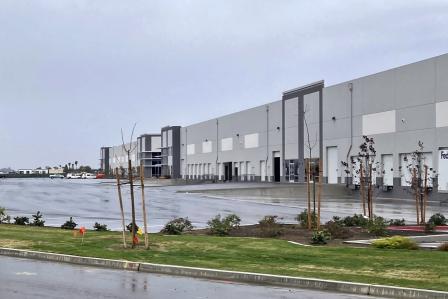After EDA Investment, Workers – and Jobs – Walking Into Fresno
Country singer Bob Gallion’s 1972 song “Walking Into Fresno” tells how lonely it can be walking in Fresno, California, in the rain. In 2014, however, it was mud and standing water – rather than loneliness – that most plagued workers walking to their jobs in one area of south Fresno after a heavy downpour. And there was an even bigger issue weighing on the development of this industrial section of the Central California city.
“One of the problems that businesses had in these particular areas was that they didn’t have storm drain service,” recalls Jason Clarke, Development Services Manager with the Fresno Metropolitan Flood Control District. “When that happens, they have to retain their stormwater runoff on-site.”
That meant that valuable acreage of commercially zoned land was occupied by stormwater runoff ponds, rendering it unusable for development. Reclaiming this land would provide space for business expansion. That’s where the Economic Development Administration (EDA) came in.
The Fresno Metropolitan Flood Control District tapped a $2.5 million EDA Public Works program grant to break ground on an extensive infrastructure improvement project in south Fresno, running storm drain service to three previously unserved commercial areas of the city. The EDA grant was matched with investments from the flood control district, the County of Fresno, the City of Fresno and the Fresno Irrigation District, and funded the installation of pipelines, construction of a new pumping station, street widening, and the rebuilding of curbs, gutters, and irrigation canals.

While the flood control district initially estimated 258 jobs would be generated from the improvements, by late 2020 that number had been far exceeded. The decision of a major retailer to locate an 855,000-square-foot distribution center on land that had been newly reclaimed from use as runoff ponds has led to the creation of nearly 2,000 new jobs in Fresno and the injection of hundreds of millions of dollars in private investment into the local economy. And, as a side benefit, the widening of streets required to facilitate drainage improvements allowed for the paving of new sidewalks, meaning workers must no longer navigate mud and water walking to their jobs.
EDA’s (PDF) empowers communities to revitalize, expand, and upgrade their physical infrastructure to attract new industry, encourage business expansion, diversify local economics, and generate or retain long-term, private sector jobs and investments. To learn more, and see how others are using EDA grants to support local economic development, please visit the
